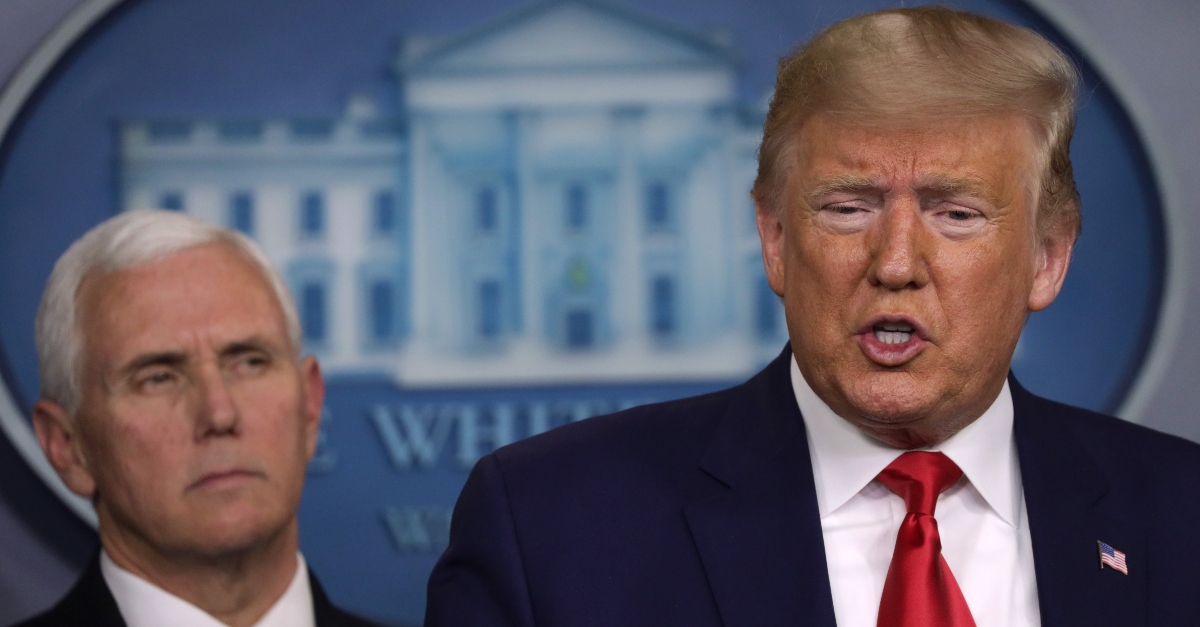
President Donald Trump declared a national emergency during a news conference after 3 p.m. on Friday. This means that Trump invoked the authority of the Robert T. Stafford Disaster Relief and Emergency Assistance Act (“The Stafford Act”) to combat the novel coronavirus COVID-19.
The Act, in part:
a) The Congress hereby finds and declares that –
(1) because disasters often cause loss of life, human suffering, loss of income, and property loss and damage; and
(2) because disasters often disrupt the normal functioning of governments and communities, and adversely affect individuals and families with great severity; special measures, designed to assist the efforts of the affected States in expediting the rendering of aid, assistance, and emergency services, and the reconstruction and rehabilitation of devastated areas, are necessary.(b) It is the intent of the Congress, by this Act, to provide an orderly and continuing means of assistance by the Federal Government to State and local governments in carrying out their responsibilities to alleviate the suffering and damage which result from such disasters by –
(1) revising and broadening the scope of existing disaster relief programs;
(2) encouraging the development of comprehensive disaster preparedness and assistance plans, programs, capabilities, and organizations by the States and by local governments;
(3) achieving greater coordination and responsiveness of disaster preparedness and relief programs;
(4) encouraging individuals, States, and local governments to protect themselves by obtaining insurance coverage to supplement or replace governmental assistance;
(5) encouraging hazard mitigation measures to reduce losses from disasters, including development of land use and construction regulations; and
(6) providing Federal assistance programs for both public and private losses sustained in disasters[.]
The 1988 law mobilizes the Federal Emergency Management Agency (FEMA) and enable FEMA to provide disaster relief funding to state and local governments in order to support their response to the pandemic. The federal law is designed to allow the government to provide orderly systematic assistance to local governments in the aftermath of natural disasters. The act differs from disaster relief funds generally provided following major earthquakes or hurricanes.
Then-President Bill Clinton previously invoked the Stafford Act to declare a state of emergency in response to the West Nile virus outbreak in the northeast United States in 2000. Under an emergency declaration by President Trump, FEMA will be able to form medical assistance teams, erect mobile hospitals, and provide military transport in areas affected by the virus.
Michael Coen, FEMA’s chief of staff during the Obama administration, recently told NBC News that the Trump administration’s invocation of the Stafford Act would signal that it was finally taking the pandemic seriously.
“To me this is another indication that the president and the White House are finally aware of the gravity of the situation,” Coen said. “They need to consider all tools available to them and have contingencies for action.”
HHS Secretary Alex Azar declared a “public health emergency” on Jan. 31.
“While this virus poses a serious public health threat, the risk to the American public remains low at this time, and we are working to keep this risk low,” Secretary Azar said in a statement at the time. “We are committed to protecting the health and safety of all Americans, and this public health emergency declaration is the latest in the series of steps the Trump Administration has taken to protect our country.”
The HHS emergency declaration gave state, tribal, and local health departments more flexibility to request authorization to temporarily reassign personnel.
Jerry Lambe contributed to this report.
[image via Alex Wong/Getty Images]
Have a tip we should know? [email protected]